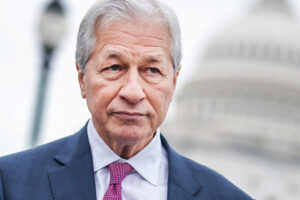
OPEC just gave world leaders the cold shoulder on their request for more oil to ease inflation.
That alone will revive interest in oil and energy stocks.
Next: A cold winter will do the same.
All of this means energy companies are still to be favored despite their massive gains. How big?
The Energy Select Sector SPDR Fund XLE, +1.30% was recently up 57% this year compared with 24% for the S&P 500 SPX, +0.37% and 18.7% for the Dow Jones Industrial Average DJIA, +0.56%.
And the 12 stocks I singled out in this column on energy a year ago are up 90%.
Here are four reasons why the energy trade will continue to work, and 11 names to consider now.
Read: U.S. oil producers pose ’emerging threat’ after OPEC+ defies calls to speed production increases
1. Brrr … a cold winter
Joe Bastardi at WeatherBELL Analytics predicts a quick start to winter will bring below-normal temperatures in November and December. January through March are a tougher call. But WeatherBELL predicts population-weighted heating-degree days will hit 3,924 November-March, above the average of 3,855 over the past 10 years.
“We are predicting a colder than normal winter for much of the U.S.,” says Bastardi.
Heating-degree days measure how much average temperatures are below 65 degrees, the temperature below which buildings need to be heated.
This will boost energy prices, but particularly natural gas.
“If we have a colder than normal winter, we are going to have double-digit natural gas prices,” says Ben Cook, who manages the Hennessy BP Energy Transition HNRIX, +1.71% fund.
Natural gas recently traded at $5.60 per metric million British thermal unit (MMBtu).
“It is very likely we may see spikes during peak demand this winter,” says Cook.
That will put a bid under natural gas stocks (see below). Cook is worth listening to because his fund outperforms its energy category by 4.4 percentage points annualized over the past five years, according to Morningstar.
2. Pack your bags
Domestic travel in the U.S. is nearly back to normal. But international travel still has a way to go.
“It is the one area of global oil demand that could improve in short order,” says Cook. It’s at 25% of pre-pandemic levels, so it has a lot of room to bounce back as concerns about Covid ease.
More travel, plus the cold winter, will create demand for the “middle distillates,” which include jet fuel (kerosene) and heating oil. Global oil demand has already bounced back above 100 million barrels per day (BPD), pre-Covid levels. But these trends could push Brent past $100 per barrel in the near term, says Bank of America commodities strategist Francisco Blanch. Brent recently traded for $80 per barrel.
3. The ESG effect
Carbon emissions make energy a tough sector to own. Environmental, social and governance (ESG) funds are the most underweight energy, and a lot of pension funds have banned the sector. Less capital means less capital spending, points out Bank of America strategist Savita Subramanian.
Low energy output from wind and hydro combined with booming industrial sector demand aggravates the problem.
“As a result, tight energy markets could persist for a number of years until the planet transitions to a green energy economy,” says Blanch. “A multi-year run up in crude oil prices is now in the cards.”
The Organization of the Petroleum Exporting Countries (OPEC) in particular has light spare capacity.
How do we know? OPEC countries have failed to keep up with production quotas, whereas they often cheat. This makes you wonder how much spare capacity OPEC really has. Even if OPEC has the four or five million barrels per day of spare capacity it claims, in a year it will eat through that with current scheduled monthly production increases of 400,000 BPD, points out Cook.
The International Energy Agency estimates the oil industry has to invest about $365 billion a year to keep up. Last year, capital expenditures (capex) fell to $350 billion. It has not rebounded in 2021, and it probably won’t in 2022 either.
4. The substitution effect
Natural gas and coal have become so expensive particularly in Asia and Europe, many big energy users are converting to oil instead. This boosts demand and turbocharges oil price gains, says Blanch.
The bottom line
Because of these factors, Bank of America recently upped its price forecasts for Brent by around $10 each, to $85 for all of 2022. But the bank predicts oil could hit $100-$120 per barrel over the next six to eight months.
On similar demand-supply concerns, Morgan Stanley analyst Martijn Rats recently upped his Brent forecast to $95 in the first quarter of next year. Citing global population and wealth growth, he predicts per capita global energy consumption will increase 23% by 2040.
All of this means earnings and cash flow estimates have to be revised higher for energy stocks, which should push them higher, says Cook.
Natural gas outlook
Like oil, natural gas has taken off and it is only going to go higher when we move into the heating season. Especially since we are likely to have a colder than normal winter, according to WeatherBELL.
This means natural gas stocks, below, have more room to run. But consider selling into strength over the next few months. Natural gas prices are likely to fall as heating demand declines during the spring and summer, predicts Bank of America.
“We believe the current winter risk premium has reached excessive levels,” says Blanch.
Production will ramp up, also putting downward pressure on prices. The bank expects Henry Hub gas prices to average and $3.45 per MMBtu in 2022, compared with around $5.60 today.
Stocks
Among the large-caps, Cook at Hennessy Funds favors Exxon Mobil XOM, +0.95% and Chevron CVX, +1.08%. He also likes Pioneer Natural Resources PXD, -0.28%, a low-cost shale producer in the Permian, and Comstock Resources CRK, +2.54%, a pure play on natural gas.
Doug Leggate at Bank of America singles out Exxon Mobil and Hess HES, +0.51% as particularly cheap. He also likes Occidental Petroleum OXY, -0.98% and APA APA, +2.82% because they are lightly hedged, which means they benefit more as energy prices rise.
I’ve suggested Continental Resources CLR, +3.31% as low at $9 in my stock letter last year. (You can find the link in my bio, below.) I still like it especially if it falls to $42.20, my current buy limit. The stock recently traded for $44.60.
Also consider liquid natural gas (LNG) companies. They freeze natural gas and ship it from low-cost to high-cost places around the globe. LNG is in high demand in Europe and Asia as those regions turn away from coal because of pollution and climate change.
“The market is underestimating the size and speed of coal replacement in Asia,” says Morgan Stanley analyst Devin McDermott. “Although renewable energy is building, it cannot fill the gap, leaving a path for higher and longer demand for LNG.”
Morgan Stanley predicts LNG demand will rise 50% by 2030. It singles out Cheniere LNG, +2.13%, NEXTDecade NEXT, +3.02% and Royal Dutch Shell RDS, +2.81%, as favored LNG names.
Risks
1. As the swing producers, U.S. frackers have a habit of borrowing too much to drill more to make a fast buck. They get overleveraged and into trouble. This is a risk, but we might not see a repeat. They have a newfound respect for shareholders. They now prioritize returning capital by raising dividends and share buybacks, and lowering risky debt levels.
“What is different now is you have corporate behavior aligned with shareholder interests and that is huge,” says Cook. “As long as the industry demonstrates capital discipline, I think energy stocks will continue to run. The source of discipline is a having a history of it beaten into their heads that when they raise spending, it usually blows up in their faces.”
This could change when OPEC officially runs out of spare capacity. That would reduce the risk of OPEC production hikes to gain share. This could happen in a year at current OPEC production rate increases, says Cook. But that is a long way off.
2. Iranian production returns. This could shave $5 to $10 per barrel off the price of oil, says Bank of America.
3. RBC Capital Markets commodity strategist Helima Croft says another risk is that President Biden releases crude from the strategic petroleum reserve to combat rising oil and gasoline prices, which are creating political problems. That would shake up energy stocks, but it would only be a temporary fix.
Michael Brush is a columnist for MarketWatch. At the time of publication, he owned XOM, CLR and NEXT. Brush has suggested XOM, CVX, PXD, CRK, HES, OXY, APA, CLR, LNG, NEXT and RDS in his stock newsletter, Brush Up on Stocks. Follow him on Twitter @mbrushstocks.










